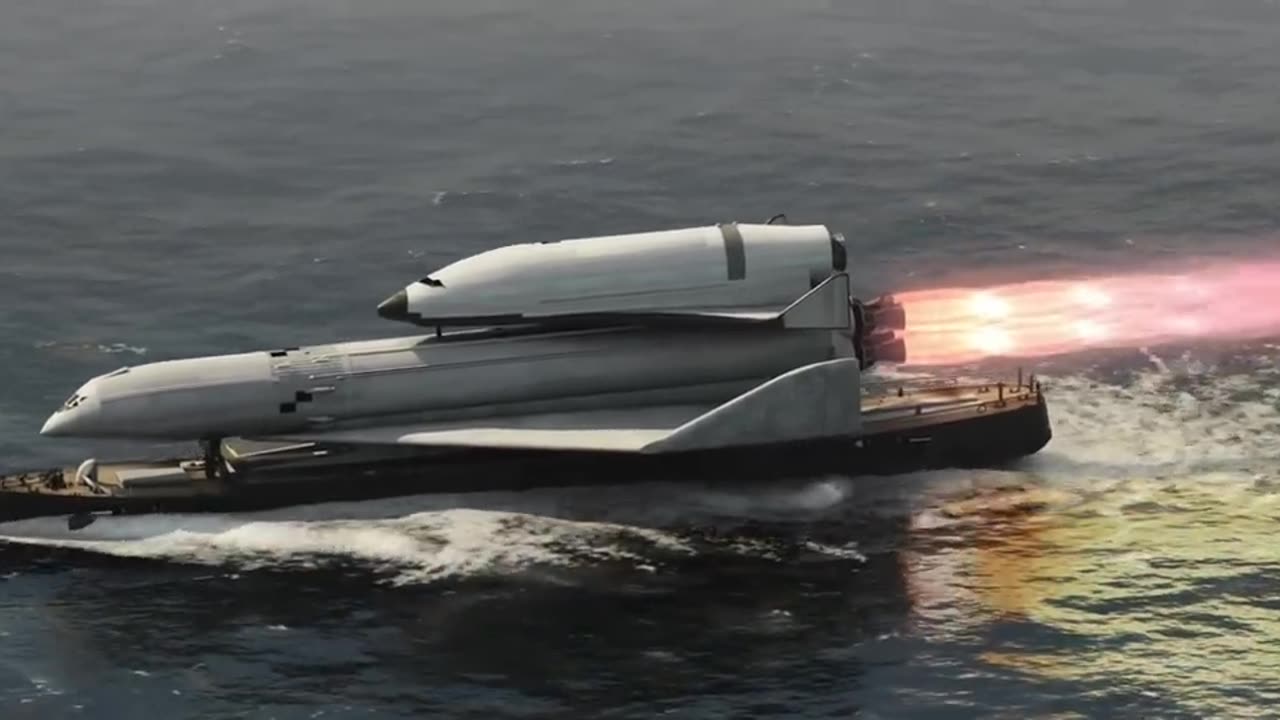Premium Only Content

Unconventional Liftoffs: The Hydrofoil Albatros Rocket
9NOv uplod 2023
1974 Russian Space Shuttle Design Concept
Alexeyev Sukhoi Albatros 3 Stage Rocket System
At its core, the vehicle was conceptualized as a multi-stage system, with the initial stage featuring a hydrofoil weighing approximately 1800 tons and stretching 70 meters in length. This hydrofoil, designed by Alexeyev, served as a precursor to a full-fledged ekranoplan. Its purpose was akin to the Space Shuttle’s external fuel tank, carrying a substantial payload of 200 tons of Liquid Oxygen (LOX) and Liquid Hydrogen (LH2). These propellants were intended to fuel the motors of the second stage.
Mounted atop the hydrofoil, the second stage, estimated at 210 tons, utilized the LOX and LH2 from the first stage to accelerate the entire assembly to a remarkable speed of 180 km/h over a span of 110 seconds. This acceleration occurred along the surface of the Caspian Sea, or alternatively, the Aral or Lake Baikal, effectively utilizing the vast water bodies as makeshift runways. After reaching the desired speed, the second stage detached from the hydrofoil and initiated its own propulsion system, lifting itself off the now-empty barge.
This second stage was an innovative creation from Sukhoi, designed as a high-speed reusable winged rocket plane/booster. Its primary objective was to elevate the third stage—an actual spaceplane, also crafted by Sukhoi—to a high altitude. The spaceplane, a pivotal component of the system, was equipped to propel itself into orbit while the booster, having fulfilled its purpose, coasted back to Earth. While details about the piloted nature of the booster remain uncertain, given Sukhoi’s background, it is plausible that it might have been manned.
The final stage of this remarkable vehicle was a tail-less rocket plane, boasting a mass of about 80 tons and spanning 40 meters in length. This design made it comparable to the American orbiter. Despite its similarity in appearance to certain iterations of the Hermes shuttle or the later Russian/European Kliper, it stood out due to its payload capacity of 30 tons to Low Earth Orbit (LEO) and its crew of two. Technically, this stage was a marvel, incorporating advanced engineering concepts to achieve its objectives.
-
 LIVE
LIVE
Cripiechuccles
2 hours ago😁💚💙MOTA MONDAY WITH CRIPIE💚💙 👌SMOKING, GAMING & WATCHING FLICKS!:😁
59 watching -
 DVR
DVR
Stephen Gardner
1 hour ago🔥'Burn ALL TRUMP FLAGS’ says Tim Walz + Democrat CAUGHT rigging own election!
2192 -
 10:10
10:10
robbijan
1 day agoHollywood’s Hidden Messages: Predictive Programming & What’s Next
1.13K8 -
 40:13
40:13
MattMorseTV
2 hours ago $3.62 earned🔴It's EVEN WORSE than we thought...🔴
12K51 -
 LIVE
LIVE
MissesMaam
4 hours agoDying Light w/ Da Bois💚✨
102 watching -
 LIVE
LIVE
Sgt Wilky Plays
1 hour agoThe Finals with the Pack
48 watching -
 32:55
32:55
Clickbait Wasteland
9 hours ago $0.21 earnedAsking New Yorkers Who They Support For Mayor: Wall Street
3.29K1 -
 LIVE
LIVE
Spartan
1 hour agoLittle bit of Halo and Expedition 33
13 watching -
 LIVE
LIVE
Fragniac
3 hours ago🔴LIVE - FRAGNIAC - THE FINALS w/ The @BrrrapPack❗ ( -_•)╦ ╤─💥
24 watching -
 LIVE
LIVE
LIVE WITH CHRIS'WORLD
3 hours agoLIVE WITH CHRIS’WORLD - A Shocking New Twist to The Same Old Game
46 watching